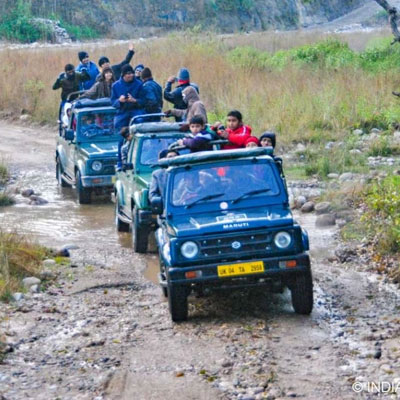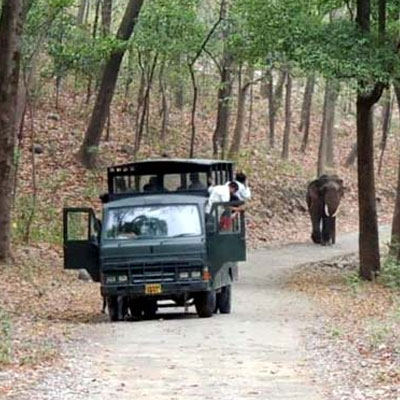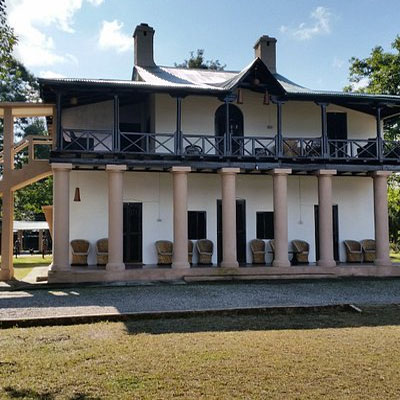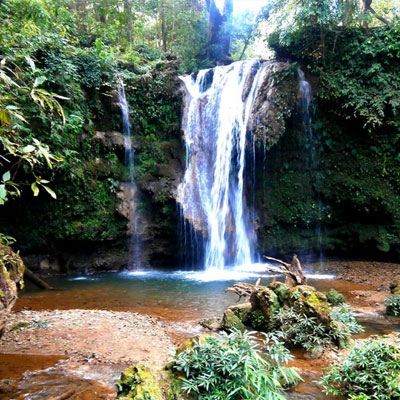
Durga Devi Zone in Jim Corbett National Park
The Durgadevi Zone in Jim Corbett National Park offers an exceptional wildlife experience through Jeep safaris. Here’s more information about the Durgadevi Jeep Safari Zone in Jim Corbett:
Durgadevi Jeep Safari Zone: Durgadevi is one of the less frequented but incredibly scenic zones within Jim Corbett National Park. It is situated in the northeastern part of the park and is known for its lush forests, diverse flora and fauna, and the tranquil Ramganga River flowing through it. The Durgadevi Zone is named after the ancient Durga Devi Temple, which is an important religious site located within the zone.
Jeep Safaris: Jeep safaris in the Durgadevi Zone offer visitors a chance to explore this pristine wilderness. The open-roofed 4×4 jeeps provide a comfortable and intimate setting for wildlife viewing and photography. The Durgadevi Zone is known for its rich biodiversity, and you may encounter a variety of wildlife, including elephants, tigers, leopards, various deer species, langurs, and an array of birdlife.
Scenic Beauty: One of the highlights of the Durgadevi Zone is its stunning landscapes. The Ramganga River adds to the beauty, offering opportunities for picturesque riverside sightings and birdwatching. The hilly terrain and thick forests make it an ideal habitat for both wildlife and nature enthusiasts.
Quiet and Serene: Compared to some of the other zones in Jim Corbett, the Durgadevi Zone sees fewer tourists, making it a peaceful and less crowded destination. This tranquility allows for a more immersive and undisturbed wildlife experience.
Timings: Jeep safaris in the Durgadevi Zone typically operate during the early morning and late afternoon, which are prime times for wildlife sightings. Be sure to check with the park authorities for the exact safari timings and availability.
Permits and Booking: To explore the Durgadevi Zone, you’ll need to obtain the required permits. These permits can be obtained through the official website of Jim Corbett National Park or from authorized agents. As the zone is less crowded, it’s often easier to secure permits compared to some of the more popular zones.
When planning your visit to the Durgadevi Zone, it’s advisable to check the park’s official website or contact the park authorities for the most up-to-date information on safari availability, timings, and permit bookings. Enjoy your Jeep safari in this scenic and lesser-explored part of Jim Corbett National Park.
Durgadevi Zone Jeep Safari Details
| Safari Type | Cost (INR) | Timings | Best Season |
|---|---|---|---|
| Morning Jeep Safari | 5500 INR per Jeep | 6:00 AM - 9:00 AM | November to June |
| Afternoon Jeep Safari | 5500 INR per Jeep | 3:00 PM - 6:00 PM | November to June |
Durga devi Jeep Safari and Adventure:-
The Durgadevi Zone in Jim Corbett National Park is one of the popular zones for jeep safaris and offers a unique opportunity to explore the natural beauty of the jungle. Here’s some information about the Durgadevi Zone, the adventure safari experience it offers, and the natural beauty of the jungle:
Location: Durgadevi Zone is located in the northern part of Jim Corbett National Park in the Indian state of Uttarakhand.
Adventure Safari: Durgadevi Zone offers jeep safaris that allow visitors to venture deep into the wilderness of the national park. Jeep safaris are a thrilling way to explore the park’s rich biodiversity, spot wildlife, and witness the natural beauty of the jungle.
Wildlife: The Durgadevi Zone is known for its diverse wildlife, including tigers, leopards, elephants, deer, wild boar, and numerous bird species. While sightings of tigers and leopards are not guaranteed, the park’s dense forests and riverine landscapes create an ideal habitat for these majestic predators.
Natural Beauty: The Durgadevi Zone is characterized by its scenic landscapes, which include dense forests, riverbeds, and grasslands. The Ramganga River flows through this zone, adding to the area’s natural beauty. The river attracts a variety of wildlife, making it a great spot for wildlife enthusiasts and photographers.
Flora and Fauna: Apart from large mammals, you can also admire the rich flora of the region, including various species of trees, shrubs, and grasses. The park is home to a variety of bird species, making it a paradise for birdwatchers.
Best Time to Visit: The best time to visit the Durgadevi Zone and Jim Corbett National Park, in general, is during the winter months from November to February when the weather is cool and wildlife sightings are more frequent. However, the park is open to visitors during different seasons, each offering a unique experience.
Safari Timings: Jeep safaris in the Durgadevi Zone are typically conducted in the morning and evening. It’s advisable to book your safari in advance as there is a limit to the number of vehicles allowed into the zone each day.
Conservation Efforts: Jim Corbett National Park is known for its conservation efforts and is an important protected area for the Bengal tiger. The park authorities and local guides work together to promote responsible tourism and wildlife conservation.
Remember to follow the park’s rules and guidelines during your visit to ensure the safety of both visitors and the wildlife. Additionally, hiring an experienced guide can enhance your safari experience and help you learn more about the park’s ecology and wildlife.
Durga devi Jeep Safari Booking:-
Online Booking: Most safari bookings for Jim Corbett National Park, including the Durgadevi Zone. You can visit the website (https://jimcorbettjeepsafari.co.in/) to check for availability and make your reservation.
Select Your Zone: When booking online, you’ll have the option to choose the Durgadevi Zone, along with the preferred safari timing (morning or evening) based on availability.
Provide Details: You’ll need to provide personal information and details of all the participants in your group, including names, ages, and identification proof (usually Aadhar card, passport, or driver’s license).
Pay the Fee: You’ll be required to pay the applicable safari fee, which can vary based on the season and whether you’re booking for Indian nationals or foreign tourists. Online payments are usually accepted through various payment methods.
Booking Confirmation: After successful booking and payment, you’ll receive a confirmation email or booking voucher. Make sure to carry a printout of this voucher with you to the park.
Identification: On the day of your safari, you’ll need to carry the identification proof you used for booking (e.g., Aadhar card, passport) as well as the booking voucher.
Reporting Time: Arrive at the designated safari entry gate for the Durgadevi Zone well before the scheduled safari time. The reporting time can vary, but it’s typically around 30 minutes to an hour before the safari departure time.
Security Check: You may go through a security check at the entry gate, and your identification documents will be verified.
Safari Vehicle: You’ll be assigned a safari vehicle with a trained guide. Typically, the vehicles used for safaris are open-top jeeps or canters.
Enjoy the Safari: Once your safari begins, enjoy the thrilling experience of exploring the Durgadevi Zone and its wildlife.
Flora and Fauna in Durgadevi Zone Jim Corbett:-
The Durgadevi Zone in Jim Corbett National Park is home to a diverse range of flora and fauna, making it an exciting destination for wildlife enthusiasts and nature lovers. Here’s an overview of the flora and fauna you can expect to encounter in the Durgadevi Zone:
Flora:
Sal Forests: The Durgadevi Zone is primarily characterized by sal (Shorea robusta) forests. Sal trees dominate the landscape and provide essential habitat for many wildlife species.
Mixed Deciduous Forests: In addition to sal, you’ll find mixed deciduous forests with various tree species such as dhak, semal, khair, and bamboo groves.
Riverine Vegetation: The presence of the Ramganga River adds riverine vegetation to the area, with plants like reeds, grasses, and water-loving species along its banks.
Grasslands: The zone features open grassy areas and meadows, providing grazing grounds for herbivores and important habitat for many bird species.
Fauna:
Tigers: Jim Corbett National Park is renowned for its tiger population, and the Durgadevi Zone is no exception. While tiger sightings are never guaranteed, this zone is known for occasional tiger sightings.
Leopards: Leopards are also present in the area, although they are elusive and often seen during the night.
Asian Elephants: The Durgadevi Zone is home to a population of Asian elephants, and you may come across herds of these majestic animals during your safari.
Spotted Deer (Chital): These graceful deer are commonly spotted in the zone and are a favorite prey of tigers and leopards.
Barking Deer (Muntjac): Another species of deer you might encounter is the barking deer, known for its distinctive alarm call.
Wild Boar: Wild boars are common in the forests and grasslands of the Durgadevi Zone.
Gharial and Mugger Crocodiles: The Ramganga River is home to gharials and mugger crocodiles. You can often see them basking on the riverbanks.
Various Bird Species: The zone is a paradise for birdwatchers, with a diverse avian population. You might spot eagles, vultures, hornbills, kingfishers, and various species of waterfowl.
Reptiles: Apart from crocodiles, the Durgadevi Zone is home to various snake species, including pythons and cobras.
Insects and Butterflies: The park also boasts a rich insect and butterfly population, adding to the overall biodiversity.
Aquatic Life: The Ramganga River supports diverse aquatic life, including various fish species.




